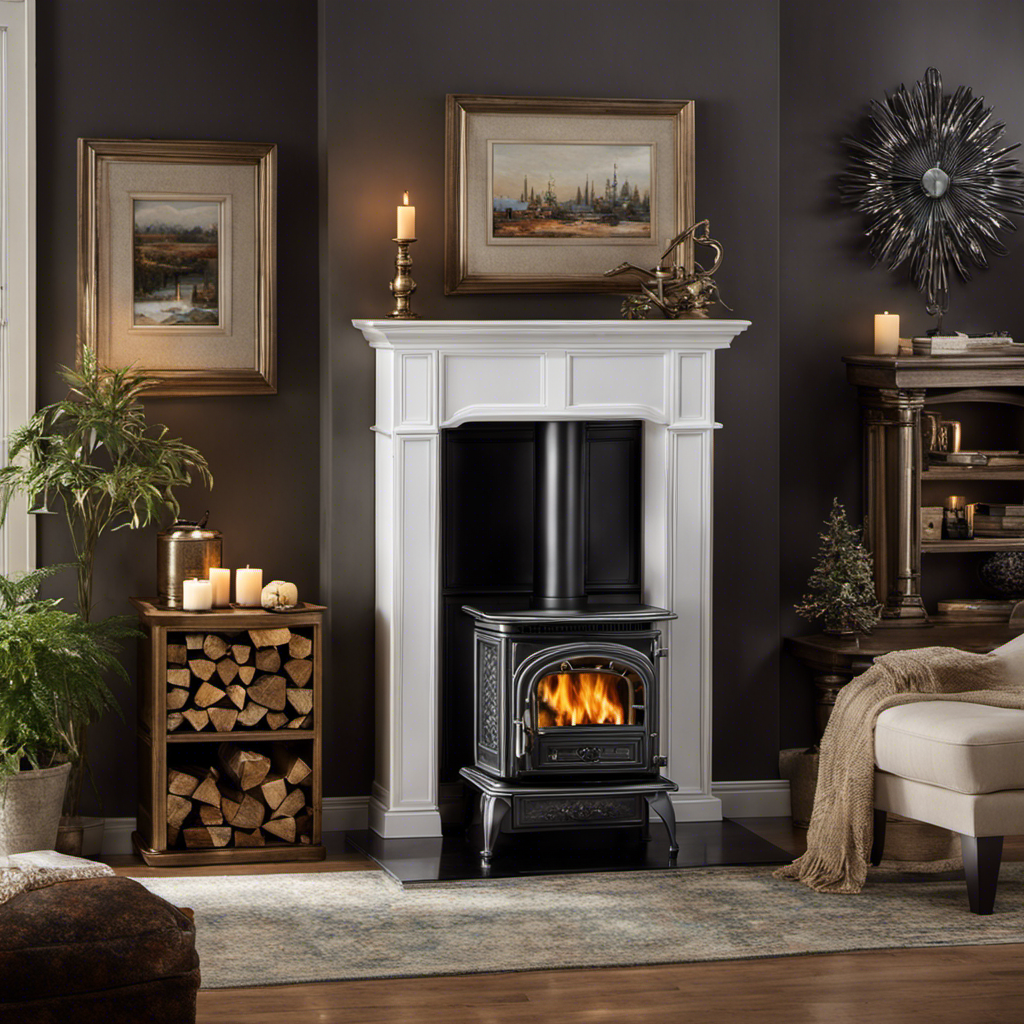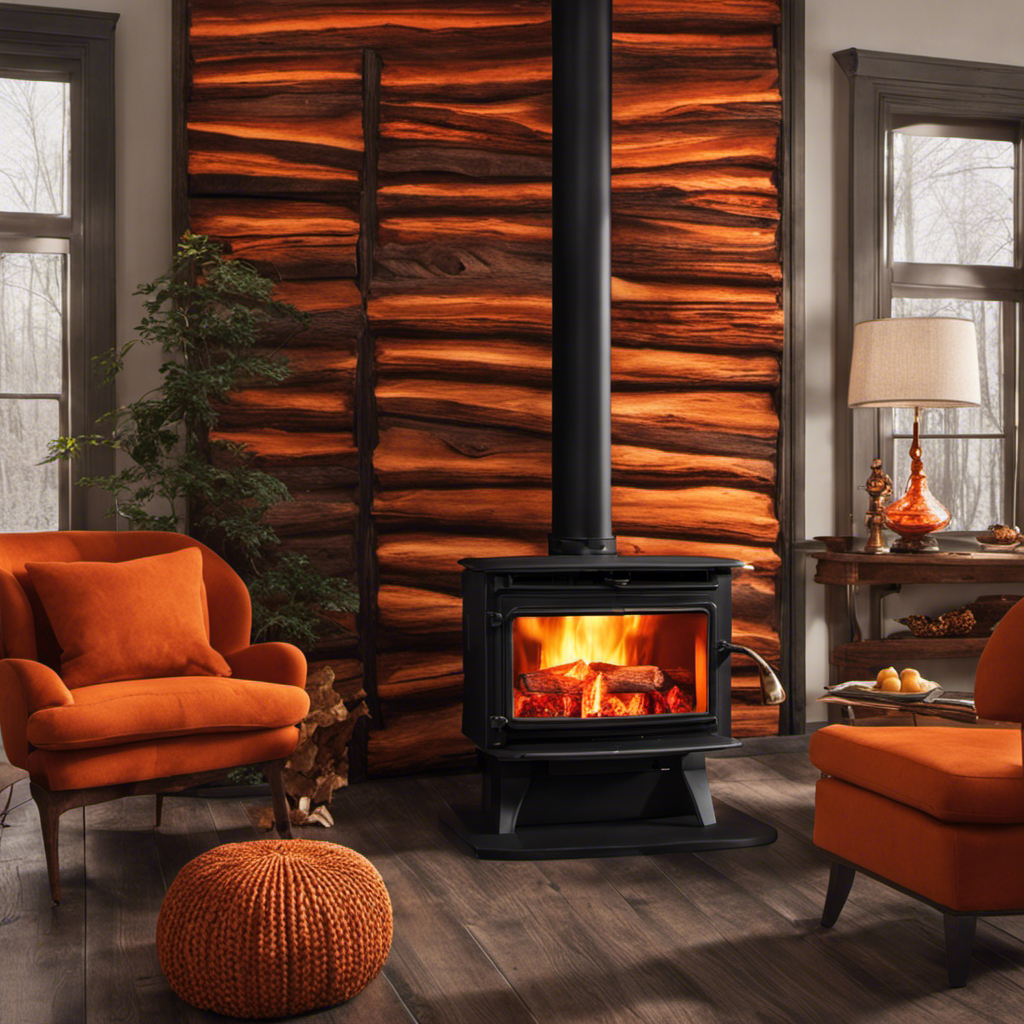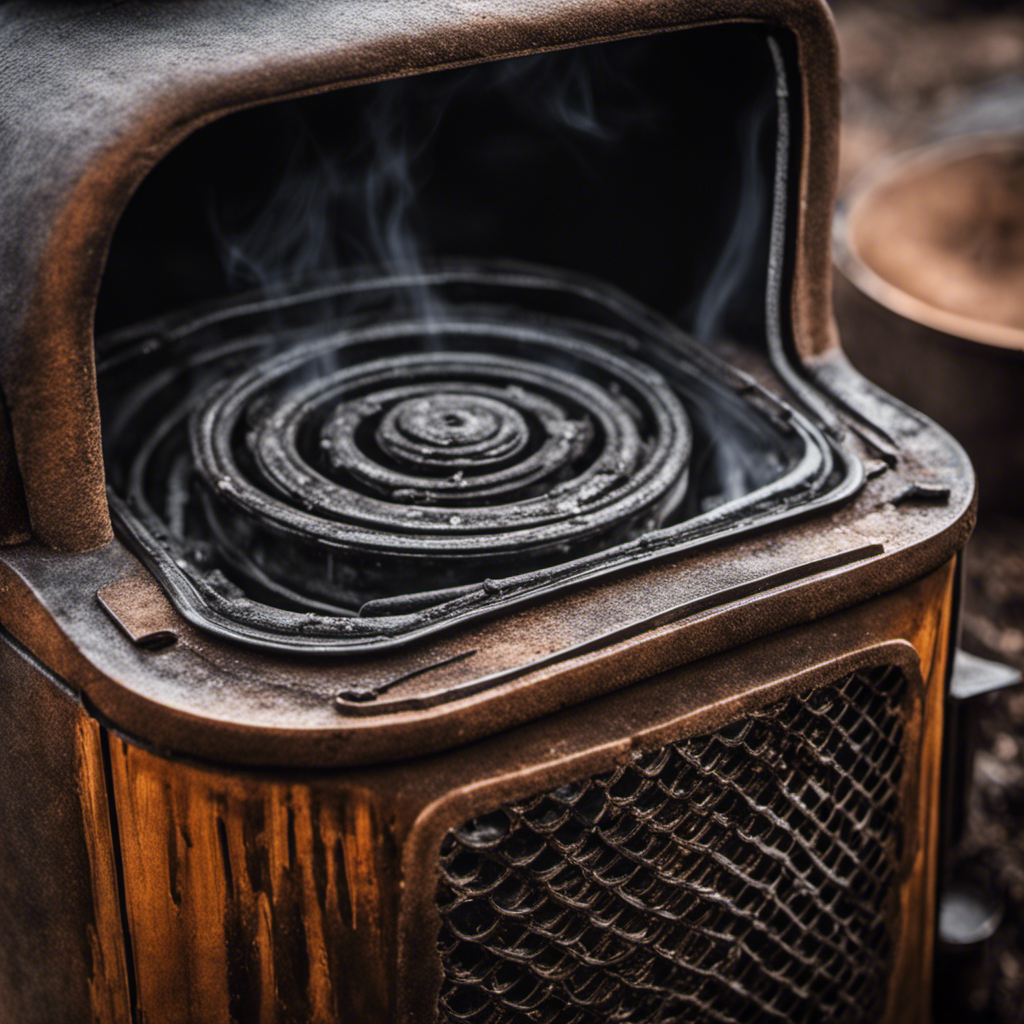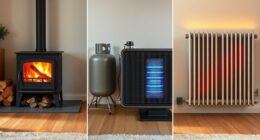As someone experienced in installing wood stoves, I can attest to the validity of the commonly referenced saying regarding elbows: ‘Too many cooks spoil the broth.’
Well, the same can be said for wood stove venting systems. Knowing the maximum allowable number of elbows is crucial for optimal performance.
In this article, I’ll delve into the factors that determine the number of elbows a wood stove can have, along with tips to avoid common mistakes and explore alternative venting options.
Key Takeaways
- Efficiency is the most important factor in determining the number of elbows in a wood stove installation.
- The maximum allowable elbows in a wood stove venting system is generally recommended to be limited to two.
- Using smooth elbows improves airflow, reduces creosote buildup, and ensures efficient combustion.
- Vertical venting offers an alternative option for wood stoves with limited elbow flexibility, providing improved draft efficiency and reduced creosote buildup.
Factors That Determine the Number of Elbows in a Wood Stove Installation
I think the most important factor in determining the number of elbows in a wood stove installation is efficiency.
There are several factors that can affect the efficiency of a wood stove, such as the type of wood being burned, the size of the stove, and the quality of the installation.
When it comes to installation, it’s crucial to have a professional do the job. A professional installer will have the knowledge and experience to ensure that the stove is installed correctly and that the venting system is designed to maximize efficiency.
They’ll also be able to determine the number of elbows needed based on the specific requirements of the stove and the layout of the installation.
Understanding the maximum allowable elbows in a wood stove venting system is essential for ensuring proper airflow and preventing any safety hazards.
Understanding the Maximum Allowable Elbows in a Wood Stove Venting System
To ensure proper ventilation in a wood stove installation, it’s important to understand the maximum number of elbows allowed in the venting system.
The maximum allowable elbows can vary depending on the specific wood stove and its manufacturer’s guidelines. However, in general, it’s recommended to limit the number of elbows in the venting system to a maximum of two.
This is because each elbow introduces resistance to the airflow, which can decrease the efficiency of the wood stove and potentially lead to smoke backdrafts or poor combustion.
Therefore, proper venting with minimal elbows is crucial for maintaining optimal performance and safety.
Now let’s move on to some tips for optimizing the elbow configuration in your wood stove installation.
Tips for Optimizing the Elbow Configuration in Your Wood Stove Installation
Two important tips for optimizing the elbow configuration in your wood stove installation are:
- Using smooth elbows
- Minimizing the number of elbows used
Smooth elbows are essential as they allow for better airflow and reduce the likelihood of creosote buildup. Creosote is a highly flammable substance that can accumulate in the elbows of your wood stove venting system, posing a fire hazard. By using smooth elbows, the flow of gases and smoke is improved, ensuring efficient combustion and reducing the risk of chimney fires.
Additionally, minimizing the number of elbows used in your installation can improve the overall performance of your wood stove. Fewer elbows mean less resistance to airflow, resulting in better heat distribution throughout your home. This can lead to increased energy efficiency and reduced heating costs.
It’s important to regularly clean your wood stove and chimney to prevent creosote buildup and maintain optimal performance. Using a wood stove insert can also provide numerous benefits, such as increased heat output and improved safety.
Common Mistakes to Avoid When Installing Elbows in a Wood Stove Venting System
Installing sharp elbows in a wood stove venting system can hinder proper airflow and increase the risk of creosote buildup. As a wood stove installation expert, I have encountered numerous installation challenges related to the use of elbows in venting systems. One common mistake is using too many elbows in the system, which can restrict airflow and cause inefficient combustion. To help you troubleshoot these issues, I have compiled a table below that outlines the recommended maximum number of elbows based on the diameter of the vent pipe. It is important to note that these numbers are general guidelines and may vary depending on the specific venting system. By following these recommendations, you can ensure optimal airflow and reduce the risk of creosote buildup in your wood stove venting system.
| Vent Pipe Diameter (inches) | Maximum Number of Elbows |
|---|---|
| 4 | 2 |
| 5 | 3 |
| 6 | 4 |
| 8 | 6 |
Remember to consult the manufacturer’s instructions and local building codes for specific requirements and recommendations. Additionally, it is crucial to use smooth elbows instead of sharp ones to minimize airflow restrictions. Proper installation and regular maintenance will help ensure the safe and efficient operation of your wood stove.
Exploring Alternative Venting Options for Wood Stoves With Limited Elbow Flexibility
As an expert in wood stove installation, I’m constantly exploring alternative venting options for wood stoves with limited elbow flexibility, such as using flexible chimney liners and offset adapters.
One alternative option that I’ve been exploring is vertical venting. Vertical venting involves running the vent pipe straight up through the ceiling and roof, without any elbows or bends. This type of venting offers several benefits, including improved draft efficiency and reduced risk of creosote buildup.
By eliminating the need for elbows, vertical venting allows for a more direct path for the exhaust gases to escape, preventing any potential blockages or restrictions. Additionally, straight venting minimizes the chances of backdrafts and ensures a more consistent and efficient flow of air.
Overall, exploring vertical venting as an alternative option for wood stoves with limited elbow flexibility can greatly enhance the performance and safety of the wood stove system.
Frequently Asked Questions
Can I Install a Wood Stove Without Any Elbows?
Yes, you can install a wood stove without any elbows. However, it is important to note that elbows are often used to create a more efficient and effective installation. There are alternative options available if you choose not to use elbows.
How Do I Calculate the Required Distance Between Elbows in a Wood Stove Installation?
To calculate the required distance between elbows in a wood stove installation, measure the total length of the flue pipe and divide it by the number of elbows. Using rigid elbows ensures better airflow and minimizes the risk of creosote buildup.
What Are the Potential Consequences of Having Too Many Elbows in a Wood Stove Venting System?
Having too many elbows in a wood stove venting system can be dangerous. It can lead to potential dangers like increased risk of creosote buildup and decreased efficiency, impacting the stove’s performance.
Are There Any Specific Regulations or Building Codes Regarding the Number of Elbows in a Wood Stove Installation?
There are specific regulations and building codes that address the number of elbows allowed in a wood stove installation. These guidelines ensure proper ventilation and safety standards are met for optimal performance.
Can I Use Flexible Elbows in a Wood Stove Venting System to Increase Flexibility and Reduce the Number of Elbows Needed?
Sure, I could use flexible elbows in my wood stove venting system to increase flexibility and reduce the number of elbows needed. However, it’s important to weigh the pros and cons before making a decision.
Conclusion
In conclusion, it turns out that a wood stove can have as many elbows as your patience can handle. While there may be guidelines and recommendations for the maximum allowable elbows, it ultimately depends on your specific installation and venting system.
So, if you enjoy the challenge of navigating a labyrinth of elbows, go ahead and embrace the twisted journey. Just remember to avoid the common mistakes and explore alternative venting options if needed.
Happy elbowing!
Logan’s affair with adventure began in childhood. He hailed from a small town where vast forests bordered one side and endless shores stretched on the other. His days were spent exploring uncharted woods, climbing tall trees, or listening to the tales of old sailors. This early immersion in a world brimming with stories and mysteries became the foundation of his passion for writing.











